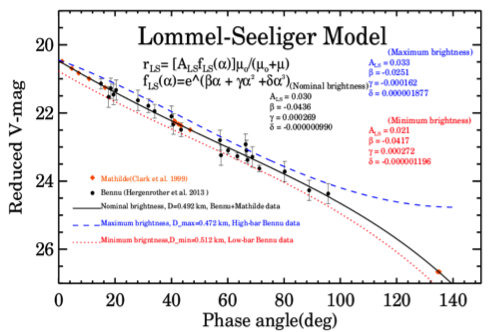|
Size: 1810
Comment:
|
Size: 1810
Comment:
|
| Deletions are marked like this. | Additions are marked like this. |
| Line 11: | Line 11: |
| '''Start:''' 75cm Preliminary Survey Shape Model | '''Start:''' 35cm Preliminary Survey Shape Model |
Test F3F - Photometric Function

Goal: The photometric function of a surface is very difficult to constrain with a large number of physical processes and material types affecting it. Several models are routinely used to describe the photometric function within SPC (see above Figure). Here we will focus on the effect of three of them. While traditional 1D photoclinometry is highly dependent on the photometric model, SPC has other tools to reduce the effect of error in the photometric model and is not as sensitive to the exact photometric model being used. This test will demonstrate how much error remains in the shape depending upon which model and which form of which model is used. It will also evaluate if the rate at which the model converges is a function of the photometric function.
Test Set Up
Data: Detailed Survey
Start: 35cm Preliminary Survey Shape Model
Build: TAG site 1. Run multiple iterations and plot the shape model after each one (plot it)
Sub-Test F3F-1
- Build shape based on Lommel-Seeliger without the 2.
- Run the model until the change in RMS between the truth model and the test model plateaus, expected to be about 50 iterations.
Sub-Test F3F-2
- Build shape based on Lommel-Seeliger with the 2
- Run the model until the change in RMS between the truth model and the test model plateaus, expected to be about 50 iterations.
Sub-Test F3F-3
- Build shape based on Clark's photometric phase function
- Run the model until the change in RMS between the truth model and the test model plateaus, expected to be about 50 iterations.
Evaluate:
- Speed at which it converges (count number of iterations)
- Relative Accuracy
